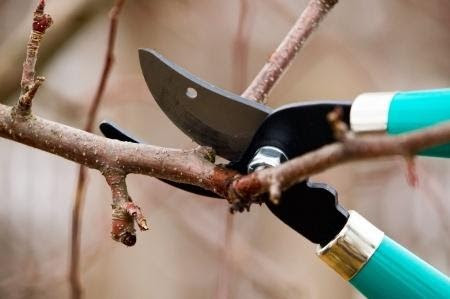Winter is an excellent time to prune deciduous trees and shrubs. It is easier to prune because you can more clearly see the structure of the plant without all the leaves attached. It is also healthier for the plant to prune it while it is dormant. If you wait until spring during the flush of newly forming leaves you can stunt the plant’s growth or even damage the bark (which is more susceptible to wounding during active growth).

Pruning is one of our favorite winter garden projects. It’s a great excuse to get outside on those few clear, sunny days. And the nature of the work feels very zen-like.
Start with cleanup. Remove dead, diseased, and disorderly branches. Any branch that crosses over another at an odd angle, rubs up against other branches, grows inward toward the center or is a duplication of another branch immediately below or above it can be removed.
When you remove a branch don’t cut completely flush to the trunk or larger branch that is left behind. On some trees and large shrubs you can see a ridge of thickened bark both above and below the branch. These are called the branch bark ridge and the branch collar. Prune just outside these areas. If you cut into them you compromise the natural plant healing process and make it harder for the shrub/tree to fight off disease organisms.
Unfortunately the branch bark ridge and branch collar aren’t always visibly detectable. So do your best and leave just a little bit of outer tissue.
When you remove a branch don’t leave behind a funny looking blunt stub either. A pruning cut that ends in a blunt stub is called a heading cut. This is the most difficult type of pruning wound for a plant to heal. It also looks unattractive and unnatural.
If you want to reduce a plant’s overall size, cut branches back to smaller side branches that are at least 1/3 the diameter. These smaller side branches can “take on” the terminal end of the branch. The overall finished look should look natural.
Do not use pruning sealants. These products not only have been proven ineffective, they can cause harm by sealing in disease organisms.
Use the right tool for the right branch size. Hand pruners are appropriate for branches under 1/2″. Loppers are good for branches up to 1″. Loppers are clumsy though and don’t always make the cleanest cuts. It is best to use pruning hand saws for branches over 1/2″. Never use a carpenter’s saw. It isn’t designed to cut into live wood.
